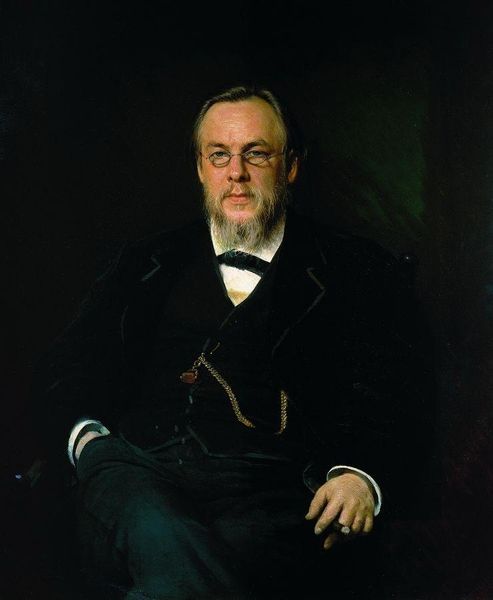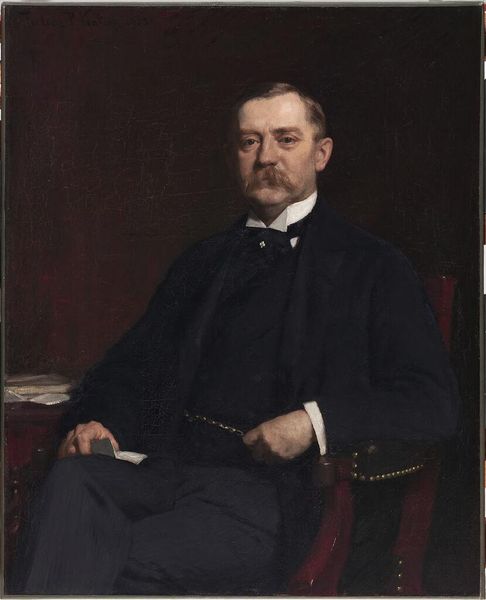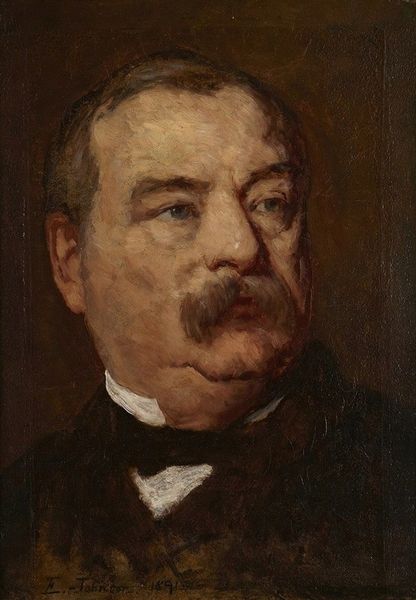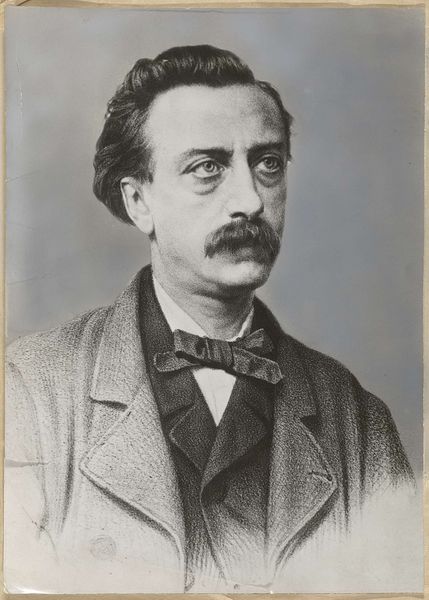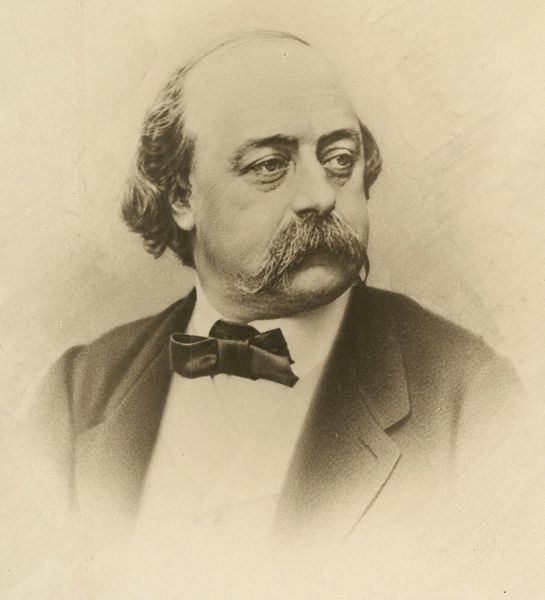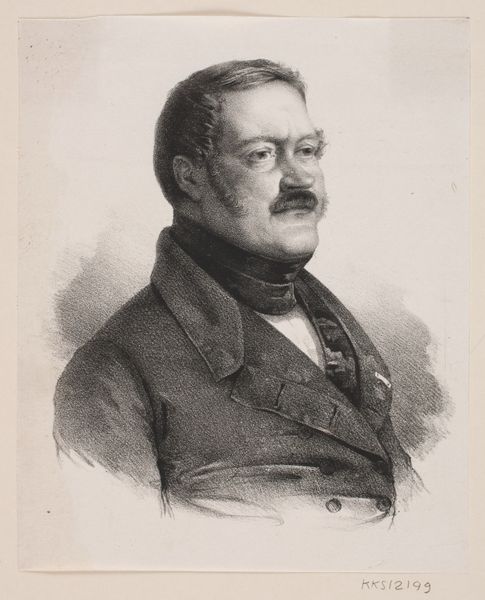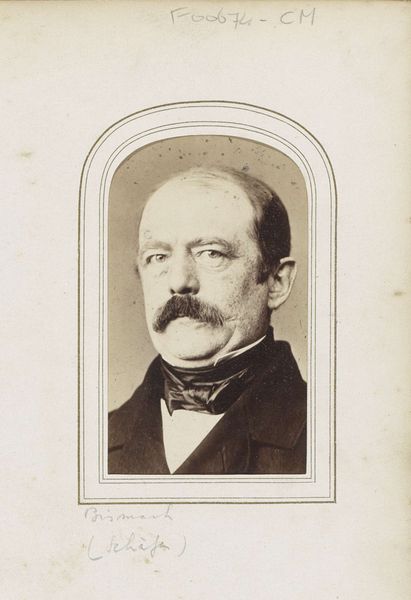
Copyright: Public domain
Editor: This is Antonio Cabral Bejarano's Self-Portrait from 1851, executed in oil paint. There's a stillness and directness to the gaze that really grabs you. What compositional elements stand out to you? Curator: Primarily, I am struck by the tension established through the employment of chiaroscuro, specifically the modelling of the face in contrast with the subdued background. Consider how the stark white of the shirt anchors the composition against the darker jacket and backdrop. Notice the geometrical structuring inherent in the framing of the portrait. Editor: I hadn't thought of the geometry before, I was too busy looking at his face! Tell me more about how the light functions in this piece. Curator: Certainly. Note the concentrated highlights: forehead, cheekbones, the bridge of the nose, and that meticulously rendered bow tie. These aren't arbitrary applications; rather, they construct the overall structure, drawing our eye to key features while also offering an element of relief to this figure in an otherwise dim mise-en-scène. Do you observe a system or specific order in the placement of colors and forms? Editor: I do see now how those bright spots create a clear focal point on his face, which, along with the crisp lines of his attire, draw you into his world. Before you pointed it out, the way his face appears from the darkness escaped me. Curator: Exactly. And now considering what we have uncovered through rigorous formal investigation, imagine what interpretations or social functions these visual choices imply! Editor: This deeper dive really highlights the deliberate choices made by the artist, something I hadn't fully grasped. Thank you! Curator: Indeed. Close attention to these intrinsic details illuminates much more than meets the cursory glance.
Comments
No comments
Be the first to comment and join the conversation on the ultimate creative platform.

